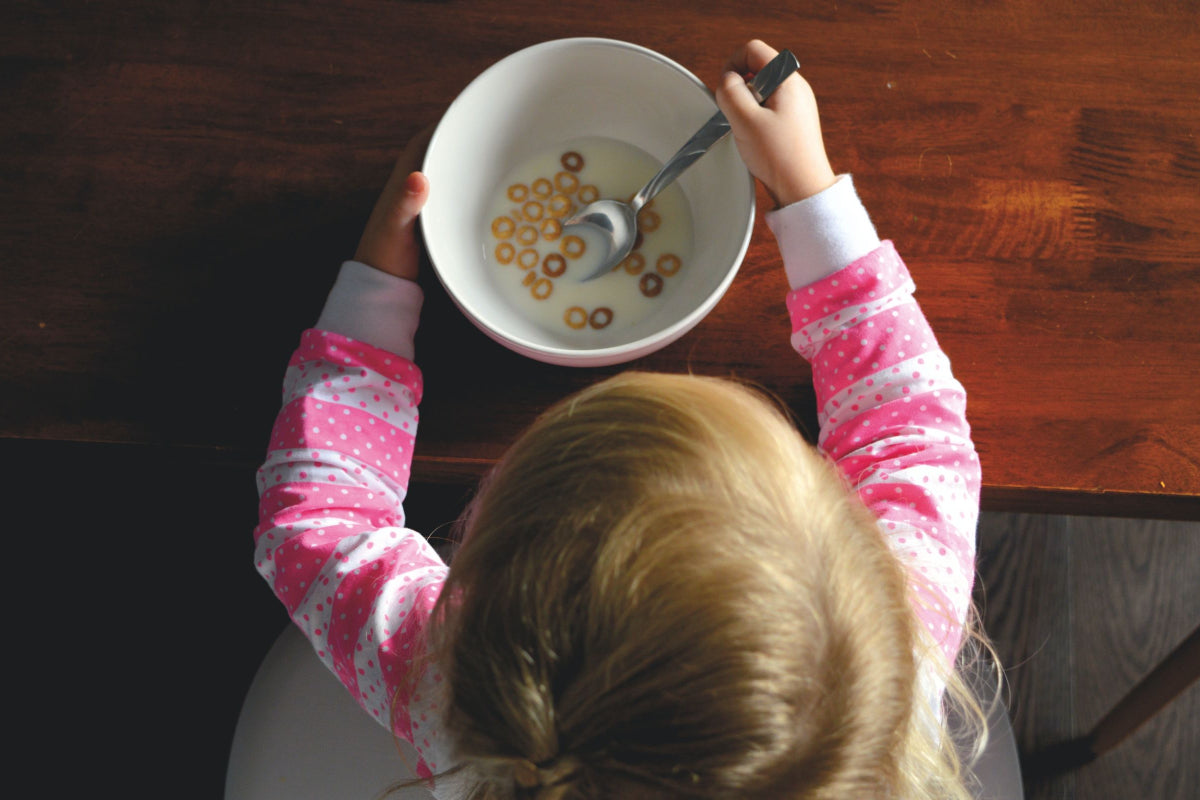
If the first time you gave your oldest child a spoonful of yogurt was the first time you witnessed an allergic reaction, you may have some trepidation about offering your second child a taste of something with dairy in it. It’s understandable. You’ve probably had a long chat with your children’s pediatrician and the family’s allergist. Those practitioners have offered you the assurance that the odds are still in your younger child’s favor. Yes, a child has a higher risk of developing a food allergy if they have an allergic sibling but at 13%, it’s relatively low-risk. (The average risk for the general population is 8%.)
Maybe your allergic child isn’t your oldest. Perhaps food allergies didn’t become something your family needed to balance until a younger sibling was born. Your oldest was happily eating PB&Js with wild abandon and then one day his sister has made it clear – from the hives to the vomiting to the slight wheeze when she takes a breath – that peanuts are going to be a problem. What do you do now?
Start With the Allergist
Food allergies aren’t something to make guesses about. They aren’t something you Google and follow whatever you find online. They are serious and potentially life-threatening. Your first step into any new aspect of managing food allergies for yourself or someone else is to ask your allergist for input.
When your older child is the non-allergic sibling, get input on the pros and cons of removing all your younger child’s allergens from the house to mitigate the risk of exposure vs not restricting your older child’s diet unnecessarily. Get input on how to help find a balance between the needs and diet requirements of your children.
If your older child is the allergic sibling, ask your allergist for guidance on how to introduce new foods to your younger daughter. Should you be looking for more subtle signs of a reaction? Should you be avoiding or delaying introduction of a food or does current research like the LEAP study suggest otherwise?
Be Honest & Age Appropriate
When one child is living with life-threatening food allergies (and remember any food allergy can be life-threatening), it impacts the whole family. You’re all going to make decisions on where to eat and what to eat. You’re going to get really good at reading labels. You’re going to make choices about self-care products and art supplies and pet food based at least in part on the risk those items present to the food allergic family member. You’re going to wash your hands after eating, not just before.
Siblings without food allergies will need to understand the ins and outs of managing food allergies. Of course, the way you present that information should take into account your child’s developmental stage and their ability to understand and handle the message. Your 4 year old, however, is not ready for the full scope of what that means, even if your 14 year old is…or at least is more ready to understand more of it.
Instill Respect, Not Fear
There’s a fine line between respect and fear. The goal should always be to teach our food allergic children and non-allergic children alike to respect the seriousness of food allergies without crossing the line into fear. Fear immobilizes. Fear creates anxiety. Fear may even make us avoid certain scenarios and opportunities that we don’t need to miss out on. Respect allows us to embrace life and live it to the fullest while simultaneously managing our health needs in a way that mitigates the risk of a reaction
Make It a Family Affair
Big brother can learn how to read labels right alongside the rest of you. Little sister can practice with the auto-injector trainer on her favorite teddy bear. Encourage them to advocate and to encourage their friends to be food allergy aware. Your allergic child will benefit from their support system, and your non-allergic children will benefit from the opportunity to be part of the process, not outside of it.
Watch Your Labels
Peanuts aren’t bad, although they aren’t safe for your peanut allergic child. Your non-allergic child, however, shouldn’t feel shame for craving a Reese’s or ordering the biggest, peanutty sundae they can find when they are staying over with grandparents for a weekend of being spoiled. It’s a treat and it’s one that they should be able to have without feeling bad or fearful about it.
Make Special Meals/Treats
Raise a hand if you’ve been up late at night in the middle of week making dozens of cupcakes piled high with frosting so your food allergic child had something fun, fancy, and more importantly, safe to eat at the school holiday party the next day. You're not alone.
It’s also a pretty good bet that you’ve excitedly purchased that box of nut-free granola bars you saw because your allergic child has never had an actual granola bar before or you grabbed the pint of expensive coconut-milk based ice cream for your dairy allergic kid. Don’t limit your special treat splurges to your allergic child.
Go ahead and pick up your other child(ren) special treats once in a while – not necessarily free of allergens they’re not allergic to. Just a splurge. Make their favorite meal once in a while – adapt if you need to so the whole family can eat it, but still, something your non-allergic child will be excited to see.
